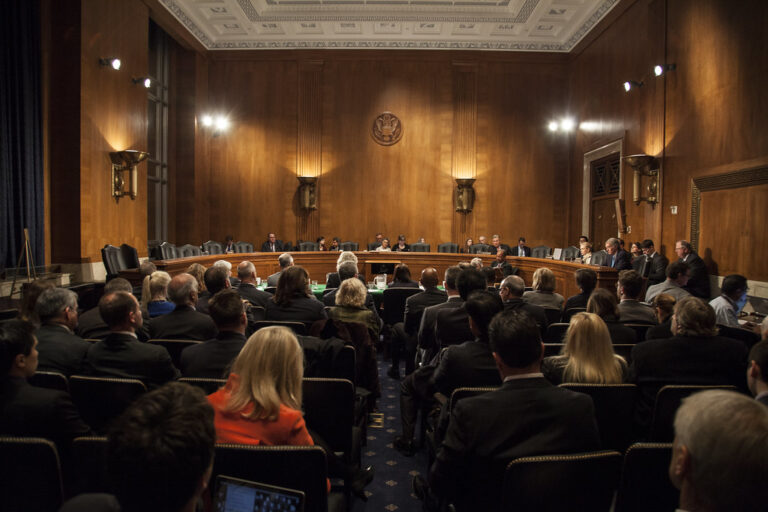Kamika Shaw is a student at Harvard Law School.
This fall, the 11th Circuit upheld an employer policy banning dreadlocks in the workplace; the court ruled that dreadlocks are not an “immutable characteristic of black persons,” and as such, an employer’s decision to rescind an offer based on the employee’s hairstyle did not violate Title VII. The ruling drew much criticism, and sparked debate about whether Title VII jurisprudence is antiquated. The 11th Circuit’s ruling seems particularly outdated in light of recent changes to the United States Army’s grooming regulations. This January, the army issued a directive that permits female soldiers to wear deadlocks. This change is the latest in a gradual relaxing of grooming standards that have disproportionately impacted black servicewomen. The army has said little about what prompted the change, but one official said that many black servicewomen have been asking for a change in policy, given the ease of maintaining dreadlocks as opposed to other hairstyles.
The 11th Circuit’s decision comports with Title VII jurisprudence pertaining to discrimination based on race, but the outcome is, nonetheless, troublesome. The court’s decision is rooted in an outdated and formalist approach to racial identity that ignores both the interplay of race and other identities, as well more contemporary notions of what constitutes racial discrimination. This outdated line of reasoning fails to properly capture the purpose of Title VII.
Title VII and Discrimination on the Basis of Race
Title VII of the Civil Rights Act of 1964 prohibits discrimination against employees on the basis race, sex, religion, color, or national origin. Despite prohibitions on discrimination, employers still have a great deal of discretion in formulating workplace grooming policies. Grooming standards that differentiate among employees are generally permissible, as long as those standards do not impose unequal burdens on a protected class. Stereotype based grooming standards can be invalid if they interfere with an employee’s ability to do their work. In EEOC v. Catastrophe Management Solutions, the court considered a grooming policy that required all employees to have hairstyles that “. . . reflect a business/professional image. No excessive hairstyles or unusual colors are acceptable[.]” CMS’s human resources department interpreted the regulation to prohibit dreadlocks. In its intentional disparate treatment claim, the EEOC framed race as social construct that includes cultural and ethnic characteristics. First, the EEOC argued that dreadlocks are in fact an immutable characteristic. The EEOC defined dreadlocks as a hair texture, which is considered an immutable characteristic, because they can form naturally in a black person’s hair. Second, the agency cited the hair policies in its own manual to support the proposition that race includes hairstyles that are culturally of physically associated with a particular race. Next, the EEOC asserted that the deadlock ban is a form of racial stereotyping. Lastly, the EEOC claimed that dreadlocks are closely connected to racial pride, and as such, a prohibition against them is an impermissible for of racial prejudice.
Despite the EEOC’s arguments, however, the Catastrophe Management court ultimately determined that it was bound by precedent to uphold CMS’s policy. Since the early 1980s, courts have consistently held that workplace grooming policies that result in prohibiting hairstyles associated with a particular race or ethnicity are permissible. Over the past thirty years, courts’ rationale for upholding these types of grooming policies has remained the same: even if a hairstyle is consistently associated with a race or nationality, hairstyles are not an immutable characteristic of race, but one the employee can reasonably change to conform to employer regulations. Courts have determined that expanding Title VII protections to cover these instances of discrimination is unwarranted.
Intersectionality and Implicit Bias: Broader Conceptions of Racial Discrimination
Implicit in courts’ reasoning is a traditional notion of race-based discrimination that ignores the interplay between race and other identities like gender. While the appearance policy at issue in CMS applies to both men and women, in practice, the ban on dreadlocks will end up disproportionately affecting black women. Black men have the option of simply cutting their hair. Short hair for men of all races is deemed socially acceptable and professional. Women, given widely accepted gendered grooming practices, may prefer longer hair. For black women with natural hair, then, a ban on deadlocks presents a problem. Black women who bring Title VII claims alleging discrimination based on hairstyles repeatedly face the following dilemma: the claim doesn’t fit the definition of race-based discrimination, but likely wouldn’t fit a court’s definition of sex-based discrimination either. Kimberly Crenshaw coined the term intersectionality to explain this dilemma. Black women’s identities as both female and black intersect in such a fashion that discrimination may be based not on one identity or the other, but the interplay between the two. Existing legal frameworks that consider identities as separate or mutually exclusive may be unable to remedy some types of discrimination we find improper.
Additionally, the courts’ current understanding of race-based discrimination is a limited one that fails to recognizes more subtle forms of bias people of color encounter. 64% of black adults report experiencing unfair treatment in the workplace. The EEOC received 32,309 complaints alleging racial discrimination in 2016 alone. The EEOC had to dismiss approximately 73% of those claims. The high rate of dismissal is due in large part to courts’ conception of race-based discrimination. Race-based discrimination jurisprudence is most able to deal with overt forms of discrimination. At the time Title VII was passed, standards that protected primarily overt racial discrimination may have been sufficient to serve the overall purposes of the statute. However, in the 50 years since the passage of Title VII, subtler but no less invidious types of discrimination have been recognized. Implicit biases, are unintentional and unconscious judgements made based on pervasive stereotypes. Implicit bias studies have shown that most people show a strong preference for white people as opposed to black people.
In the employment context, this can mean that seemingly neutral policies that afford supervisors substantial discretion can lead to results that have disproportionately negative impacts on traditionally marginalized groups. The stories of black servicewomen provide a glimpse into how implicit bias operates. Some black servicewomen felt there was a stigma associated with coarser hair textures and dreadlocks. One black servicewomen said she felt that there was added scrutiny by superiors, and black women frequently felt singled out because enforcement of the regulations were subject to interpretation. Implicit biases may lead a supervisor to view hairstyles traditionally associated with a specific racial or ethnic group as unprofessional for reasons that have very little legitimate basis in workplace policy.
Conclusion
The army, not usually thought of as a catalyst of change, was willing to change a policy that unduly burdened black women. The shift in policy implicitly recognizes that what constitutes race is not as narrow as we may have once thought. Title VII jurisprudence should also change to comport with contemporary notions of race. While immutability can be part of assessing whether a policy is racially discriminatory, it should not be the end of the inquiry. An employment practice that leads to the exclusion of, or the imposition of disproportionate burdens on, persons of a particular race undoubtedly falls within contemporary understandings of discrimination. Title VII was meant to stomp out reprehensible discriminatory practices in the workplace. Situated within the Civil Rights Act of 1964, it is clear that lawmakers thought that workplaces could be sites of social change. More overt forms of racial discrimination are much rarer than they were 50 years ago, but subtle forms of racial discrimination still pervade the workplace. Courts should, given the purposes of Title VII, move towards including mutable characteristics like hair in the definition of race; doing so would help address the subtler forms of discrimination employees face in the workplace today.






Daily News & Commentary
Start your day with our roundup of the latest labor developments. See all
November 25
In today’s news and commentary, OSHA fines Taylor Foods, Santa Fe raises their living wage, and a date is set for a Senate committee to consider Trump’s NLRB nominee. OSHA has issued an approximately $1.1 million dollar fine to Taylor Farms New Jersey, a subsidiary of Taylor Fresh Foods, after identifying repeated and serious safety […]
November 24
Labor leaders criticize tariffs; White House cancels jobs report; and student organizers launch chaperone program for noncitizens.
November 23
Workers at the Southeastern Pennsylvania Transportation Authority vote to authorize a strike; Washington State legislators consider a bill empowering public employees to bargain over workplace AI implementation; and University of California workers engage in a two-day strike.
November 21
The “Big Three” record labels make a deal with an AI music streaming startup; 30 stores join the now week-old Starbucks Workers United strike; and the Mine Safety and Health Administration draws scrutiny over a recent worker death.
November 20
Law professors file brief in Slaughter; New York appeals court hears arguments about blog post firing; Senate committee delays consideration of NLRB nominee.
November 19
A federal judge blocks the Trump administration’s efforts to cancel the collective bargaining rights of workers at the U.S. Agency for Global Media; Representative Jared Golden secures 218 signatures for a bill that would repeal a Trump administration executive order stripping federal workers of their collective bargaining rights; and Dallas residents sue the City of Dallas in hopes of declaring hundreds of ordinances that ban bias against LGBTQ+ individuals void.